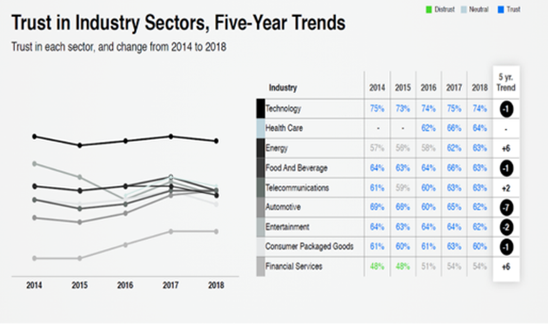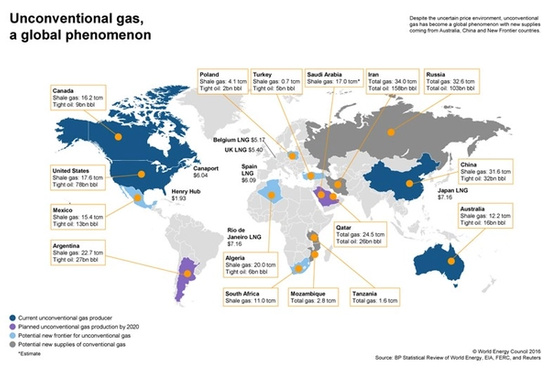Oil and Gas companies are aware of their environmental responsibilities, the financial re-directing of governmental decarbonization initiatives, and the growing perception towards climate change. Responding to these concerns, supermajors are investing in battery innovation and renewable energy resources. The acceptance by the O&G community that climate change must be addressed has increased consumer trust as indicated by the steady climb in the 2018 Edelman Trust Barometer since 2014. (https://www.forbes.com/sites/uhenergy/2018/04/05/prices-are-up-but-challenges-remain-for-oil-and-gas-companies/#2e14481b213d)

But there's more to the environmental question than adherence to regulations and alternative fuels. O&G companies realize that resource productivity—getting the most out of a well, isn't just economically important; it's a vital part of environmental stewardship. Renewable resources still need time to mature. Under the Obama administration, Mark Zoback, professor of Geophysics at Stanford University and Technical Advisor to Petro.ai, served on a panel to address the environmental impact of shale gas production. In a Stanford Report article, he noted that "the global energy system is so huge that even if we move as quickly as possible to develop renewable energy sources such as wind, water and solar, we will need to continue using fossil fuels until mid-century." (https://news.stanford.edu/news/2011/august/zoback-fracking-qanda-083011.html)

With that stretch of time looming ahead of us, O&G companies are faced with the difficult tasks of (1) figuring out how to effectively fracture the low permeability shale strata to release cleaner burning natural gas and (2) how to recover oil that's being left in the ground. As a bridge to our green energy future, natural gas provides a transition alternative that produces fewer pollutants than either coal or oil. Globally, the amount of shale gas is enormous, enough to provide a 100-year buffer at current consumption to the time when those alternative energy sources are ready. Particularly for the creation of electrical energy, natural gas is replacing coal and reducing the carbon footprint by more than 20% since 2006. (See also https://www.youtube.com/watch?v=ChNeFTNEO9c.)

Then there's that tough to extract oil still lying untouched in fields across the world. According to experts, that residual represents two-thirds of the oil in known fields. (https://www.technologyreview.com/s/410160/oil-left-in-the-ground/)

There are many reasons for this large untouched percentage including the rate of extraction in a well, poor geology, well spacing, well construction, or poor hydraulic fracturing methodology. Both natural gas extraction and left behind oil can be addressed. The data is there for understanding the oil and gas field, but the complexity of the factors to optimize shale extraction requires a multi-faceted, multi-layered approach. To answer this need, Petro.ai collaborates with Dr. Mark Zoback to embed geomechanics in a platform that bundles data conditioning with machine learning and visualizations to enable analytics at the well, section, and asset level. Petro.ai enables O&G companies to determine the individual elements of a well plan that have the greatest impact on production, boosting the amount of oil extracted from each well and optimizing the correct approach for unconventional drilling. By increasing the recovery from a well, O&G companies answer the call to environmental stewardship, giving us the buffer we need to move towards a world of alternative energy sources.




